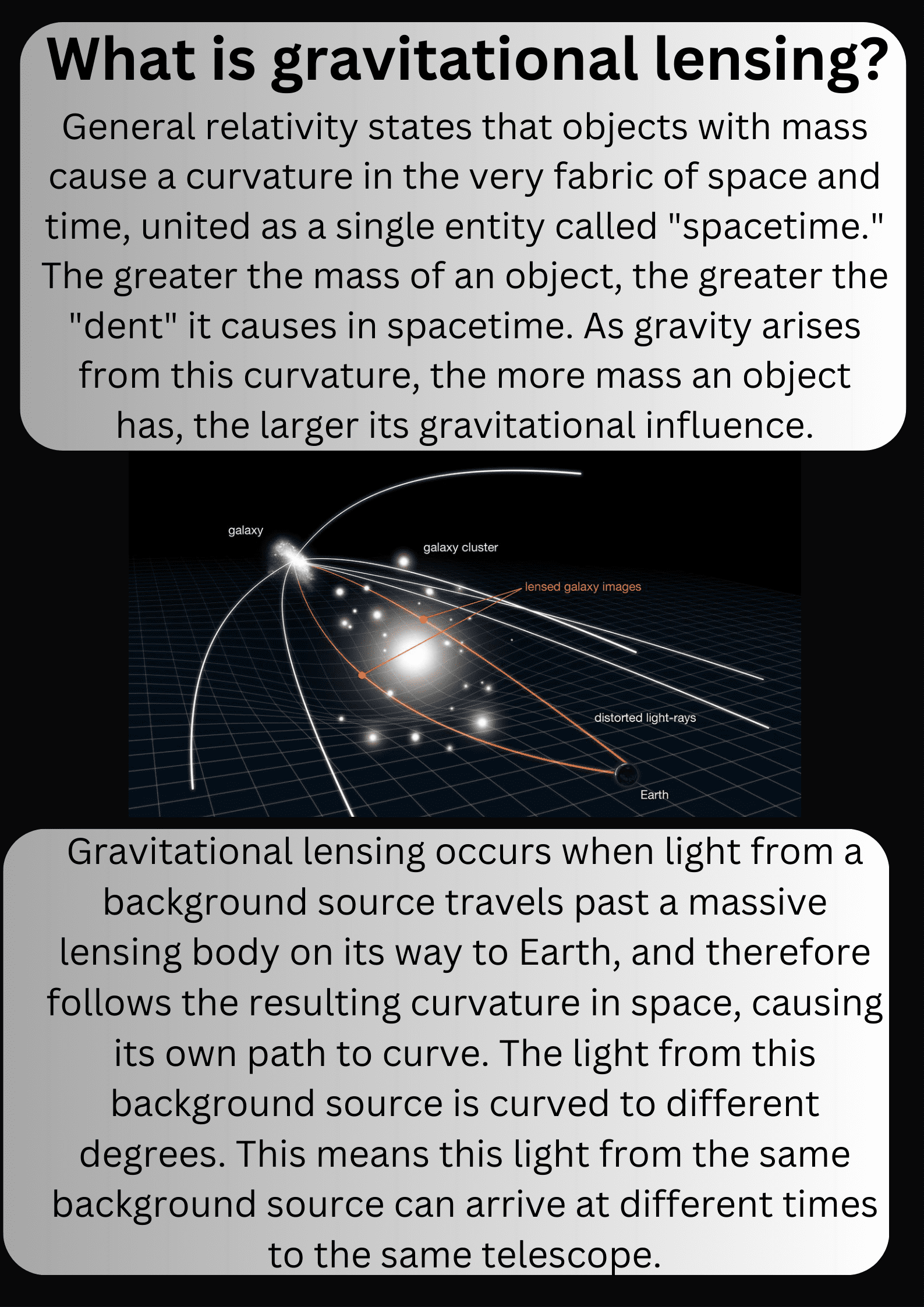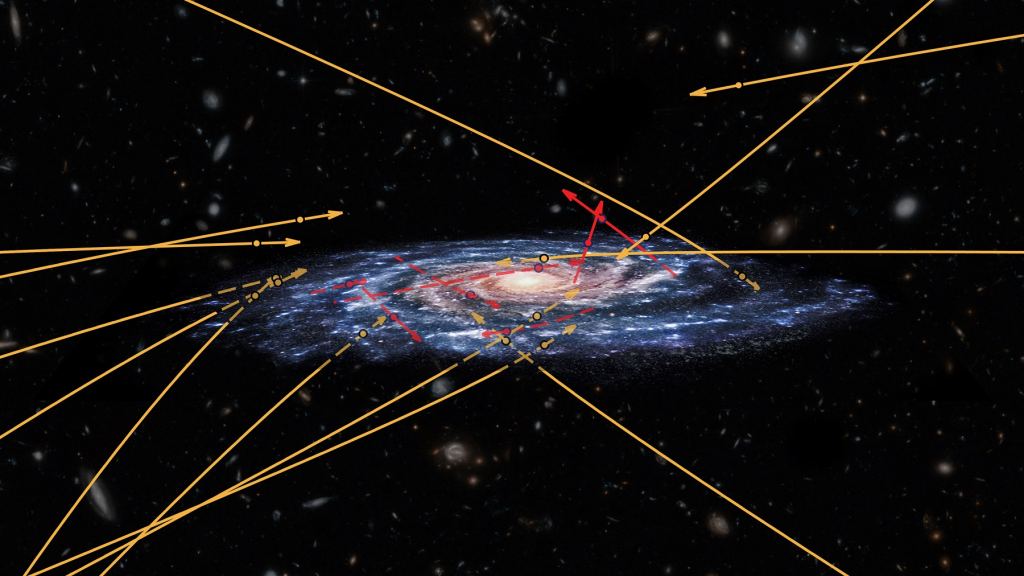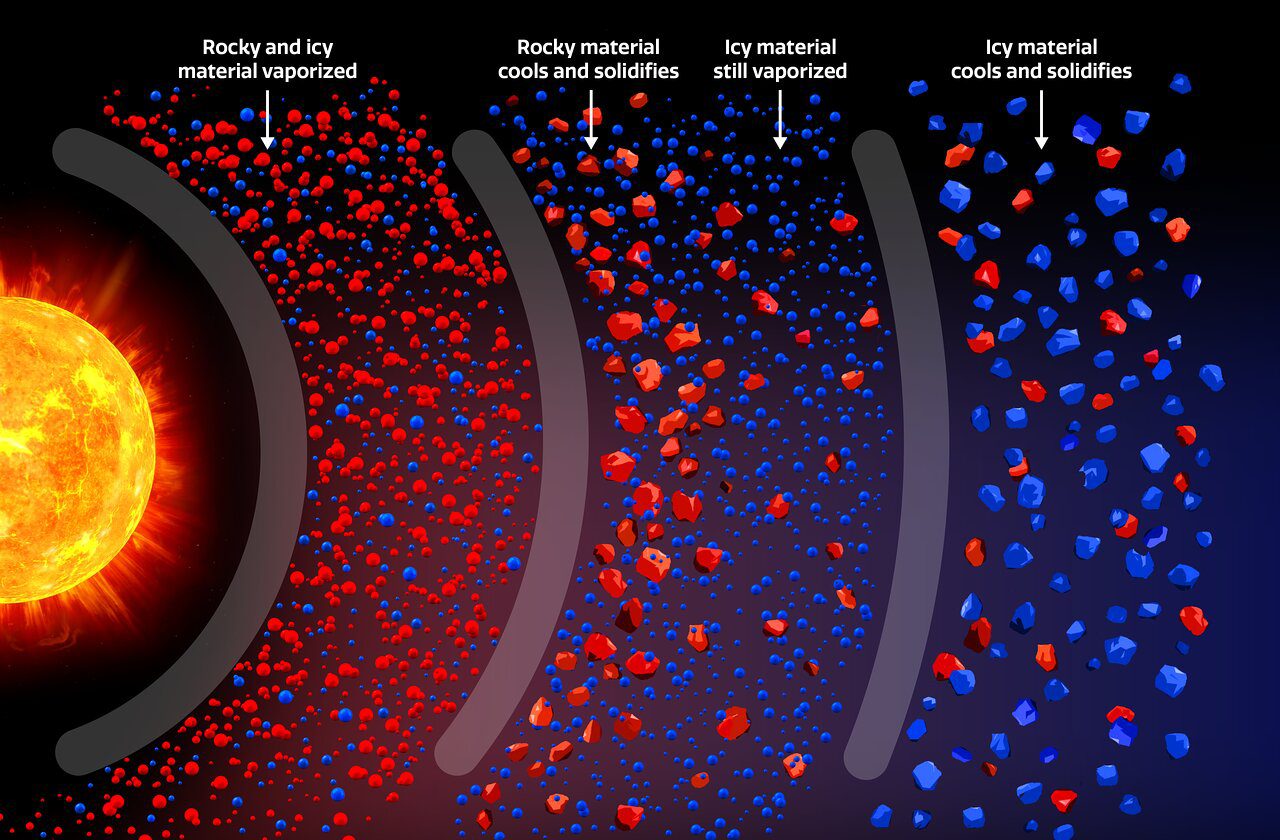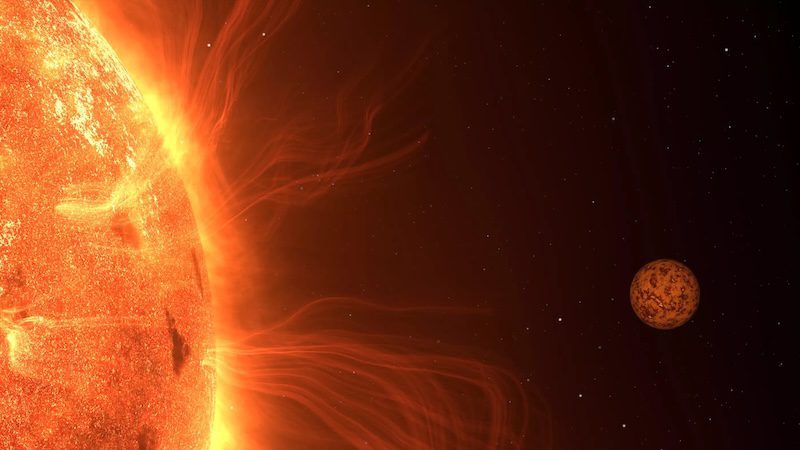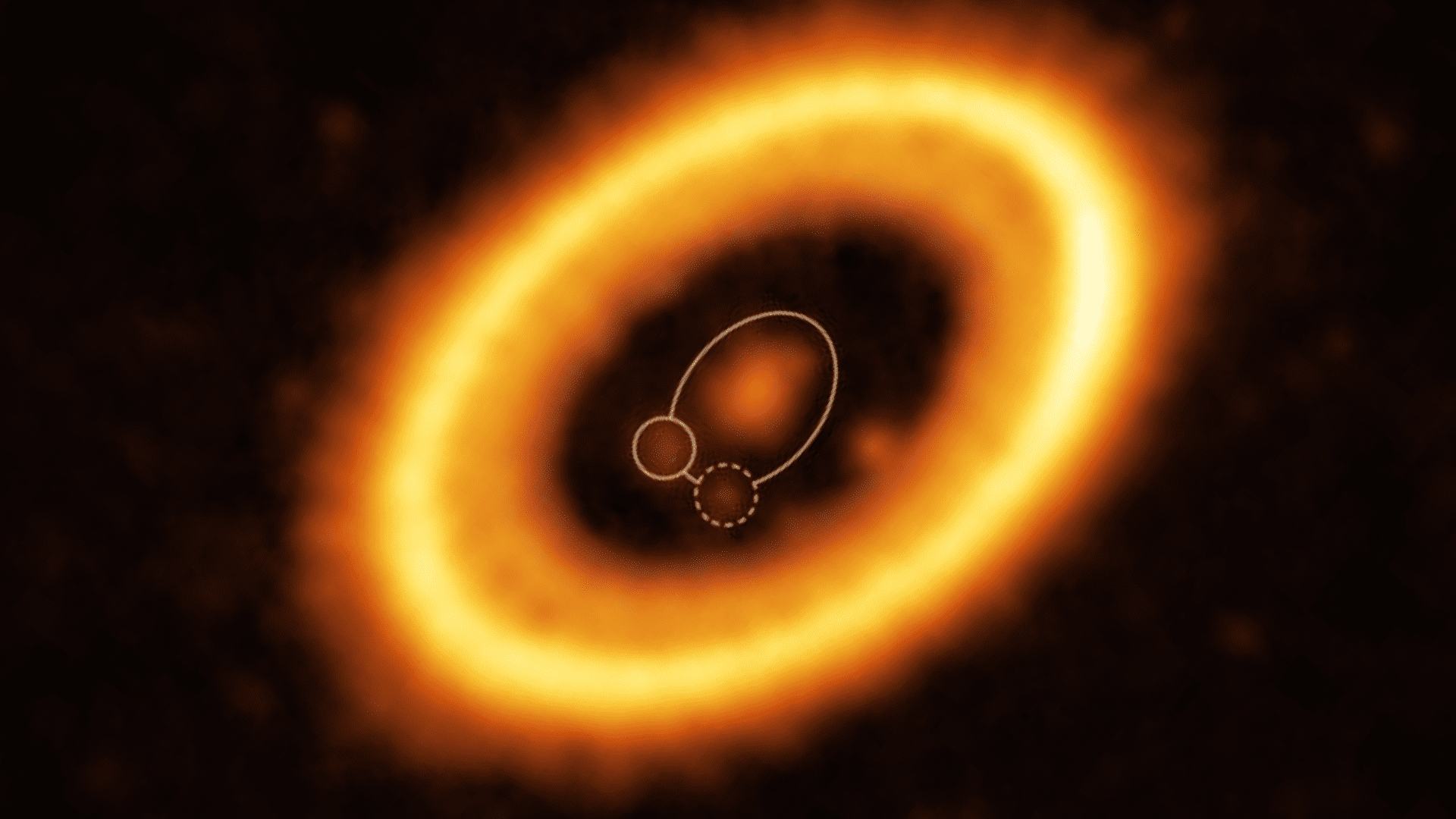Speediest exoplanet found near Milky Way center?
View larger. | Artist’s visualization of stars near the center of the Milky Way. The longer the trail of each star, the faster it is moving. Scientists have discovered what might be the speediest exoplanet system yet. It’s depicted with a long bright trail at center. Image via NASA/ JPL-Caltech/ R. Hurt (Caltech-IPAC). Stars move … Read more

